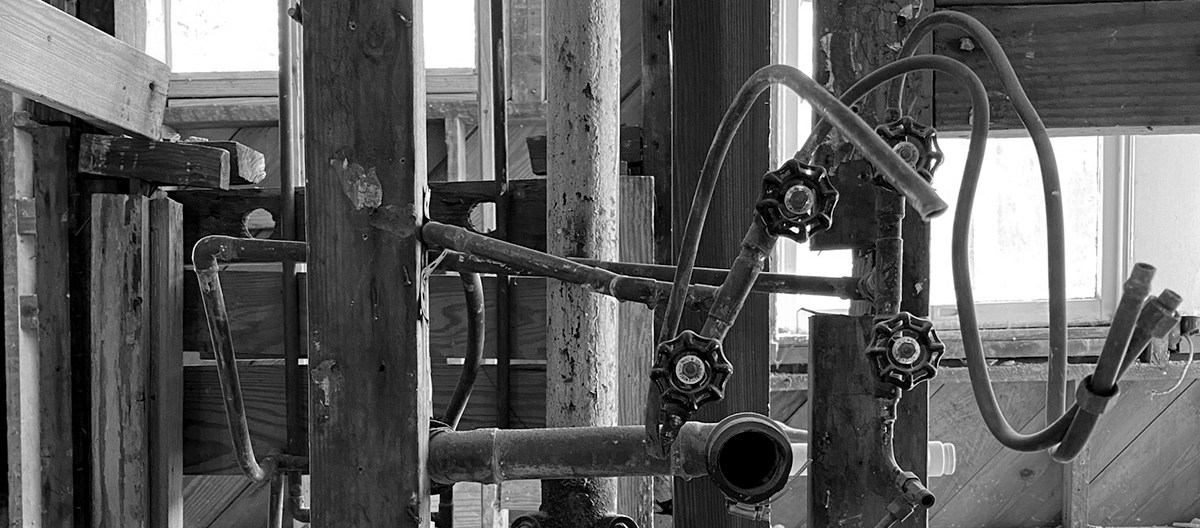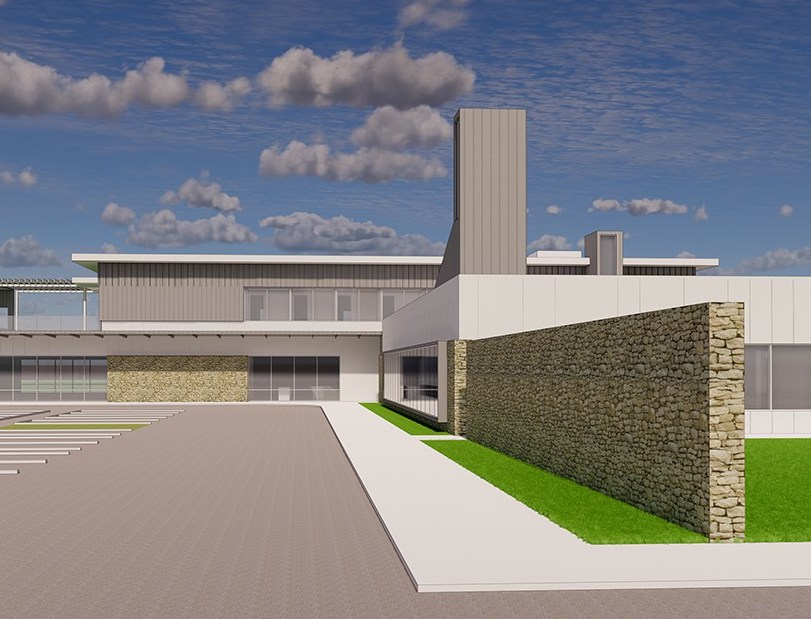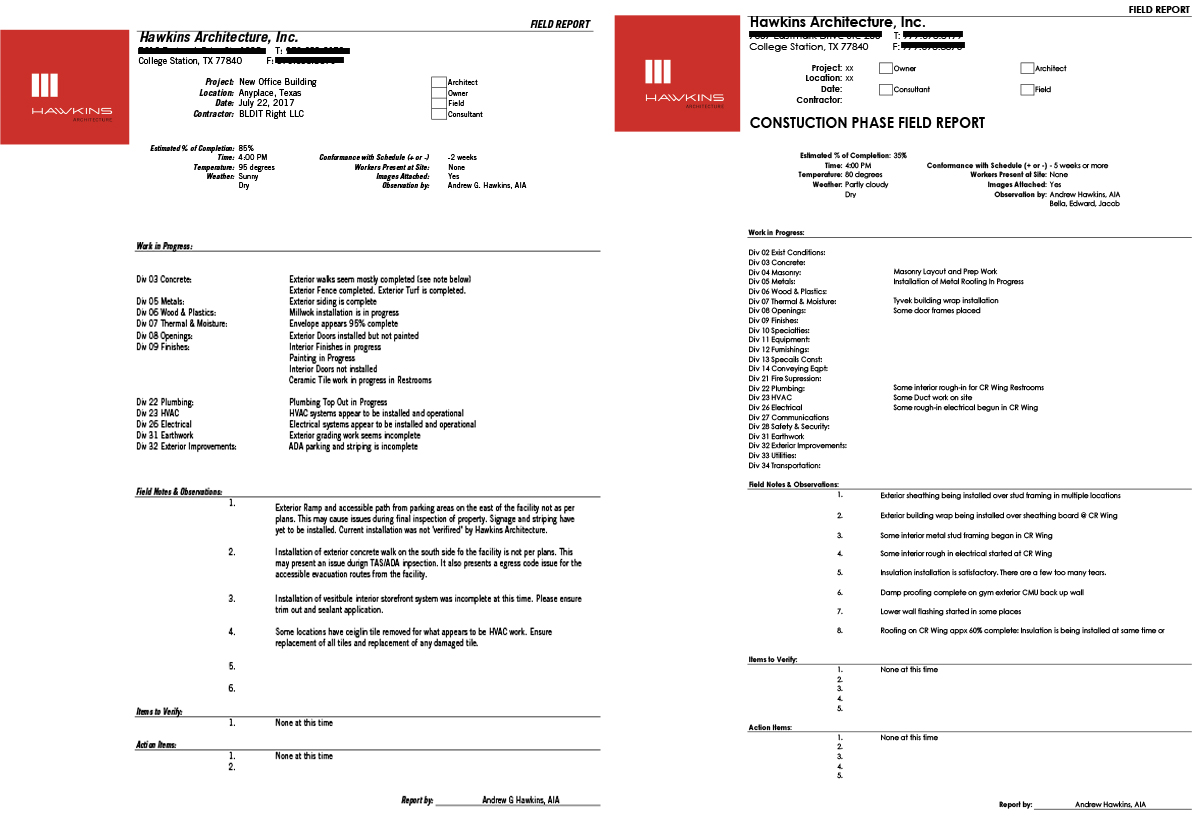For some architects, being on the jobsite is a vital part of their work process, while for others, they see jobsite visits as a series of obligations fraught with increased liability. I personally love going to jobsites and all that entails. Welcome to episode 71, “Architects on the Jobsite.”
Personal History of going out to jobsite - jump to 06:47

Within the first year of me completing school and working in my first real job, I was going on jobsite visits with my boss. It was a small firm and so it was just how it went. Granted for the first few years I was just a gopher, note taker, photographer, and holder of stuff. I did still learn from the visits, but it was much more from a true observation manner because I didn’t really speak up during any meetings. But I did ask questions and get answers that helped me gain a better understanding of the process.
Bob began his career a bit differently in regard to site visits. His first jobs were high end retail design projects. Those contractors who built these projects tended to be very experienced and skilled at that process. This resulted in less site visits very early in his career. When there was a need for site visits, his boss typically took those on as they were all across the country. But when he did get the chance to visit, he was able to learn a great deal about the process that would begin to inform his ideas about design. Once the projects became more residential in nature, his jobsite time began to increase.
Who gets to go to jobsites – big firm versus small firm - jump to 16:14

There seems to be a basic trend of smaller firms provide more opportunities to be on a jobsite sooner in the career. While this may not be 100% true, it seems to be the majority. This is mostly due to the nature of firm size and responsibility. When I was operating my firm I almost always took a young person or two (even all at times) to the jobsites with me. I would have them take notes and photos and allow them to explore the site and ask questions. Actually a very similar process to my own experiences early in my career. This may not be the way things work at a larger firm.
The larger firms become the more focused and specialized the roles seem to become also. This often limits the type of individual that goes to jobsites. Many of those professionals who are either early in their career or even in the middle may not be in a position to go. As you become more senior those opportunities become more available and in some cases required. But also at bigger firms, there are staff members who focus on construction administration and they do a lot of those (if not all) jobsite visits. So it may be that is you are interested in that and also desire a large firm there is a possibility that you could focus on that for your career. This does not happen very often in smaller firms.
Spending time on the jobsite should impact your design process. Once you have the knowledge of the construction process, you should apply it to your design process as well. Bob and I certainly agree on that point. Having that knowledge will make you a better architect. We would argue that it is a requirement for being a good architect, and definitely for being a great one.
How often do you go on a jobsite during projects - jump to 23:54

For the majority of my commercial and public projects work, I tended to visit a jobsite twice per month or roughly every two weeks. This does vary with the progress stage of the project. For example, it may be less in the beginning months when the primary tasks are earthwork and dirt moving. Then as things started coming out of the ground, I would make more regular visits. One monthly OAC (Owner-Architect-Contractor) meeting would be held to keep everyone on the same page about the project. From discussions with most of my colleagues, this type of visitation timeline seems to be typical.
Bob on the other hand, with his residential work, had a tendency to be on-site more often. This was especially true when the projects were in the Dallas area. At times, he would make jobsite visits multiple times per week; even multiple times per day in some instances. This rarely happens in the commercial realm, but the residential market is definitely more personal. Bob also enjoys being on-site and seeing his projects come to life. This is something we can both agree upon. It’s great to watch your design come to life. The one perk that he seems to have is that he has conducted many site visits over a glass of wine with his clients as they walk the jobsites after work. This is not something that happens in commercial work, so maybe this is a possible perk from all of those jobsite visits during one week!
Benefit of jobsite visits - jump to 28:10

Being on a jobsite is critical to your growth as an architect. On this matter, Bob and I wholeheartedly agree. The ability to see the process and sequencing of construction is one of the largest positives of gain from being out on site. Once you start to understand the way projects get built, and I mean everything from foundations to finishes, you can start to design with that knowledge in mind. This doesn’t mean you design to the lowest common denominator, just that you now be more deliberate with the decisions being made that can affect the construction and the final product.
For example, knowing that a long run of wall will require an expansion joint, you can now, as the informed designer, decide where it goes and not rely on the contractor to make that decision in the field. You know more and now have more to control the way the project gets completed. The ability to understand the sequence of construction will certainly impact your decisions while you design projects in your office on the void space of the computer.
Construction Tolerance - jump to 30:40

One of the most useful exercises that any young architect can partake in is to visit construction sites as often as possible. It is one thing to sit in an office all day designing and drafting up construction details and another thing altogether to spend time on a jobsite seeing how things actually get built. Sometimes it’s the little things like the fact that framing lumber isn’t always straight even though I’ve never drawn a bowed piece of wood in any of my details. Sometimes the considerations can be a bit bigger and have a different sort of impact on the project.
“For me to be the type of architect I want to be, I need to understand how a thing is built … now I can’t design without thinking about how something is built.”
If you are listening along to the podcast, at the 32:50, the image above is a building I designed that I referenced as an example of how I believe that designers fundamentally need to understand how buildings are built in order for the design to show up as a built version of your design vision. If I didn’t understand how the roof is accessed and how large my cantilevers can be based on my budget. You have to know the rules in order to effectively challenge or break those rules.
The legal side of jobsite visits - jump to 37:05

The architect has a responsibility to satisfy him or herself that the work is being performed in accordance with the contract documents. The architect is not responsible to be intimately familiar with every nut and bolt of construction as the work is progressing. It is the respective trade contractors who are responsible to install the work correctly in the first place. This is probably one of the most conflict-prone areas of the work, not merely because the area may be complex, but because ultimately this decision will affect everyone’s pocketbook.
The activities that make up this ongoing evaluation of the work as determined specifically in most contracts include the following:
Inspection
The architect is often responsible for making regular visits to the jobsite to familiarize themselves generally with the progress and quality of the work. It is usually not enough to review the progress photos and try and get the picture of job progress through the correspondence. He or she must be on the site to confirm that the work is progressing along the lines of that expected as the work is progressing. It is not reasonable, for example, to wait until all the brick is up before the architect determines that the color of the mortar is not close enough to the sample to be considered acceptable.
Finally, the architect should be available on a periodic basis and any other time when needed to answer questions and resolve minor conflicts as quickly as possible, without having to cause the contractor to hunt unreasonably for the answers.
Evaluation
The architect is responsible to either determine entirely or to confirm the owner’s evaluation of the fitness of the work, along with the associated dollar value. This, in some ways, is the most powerful duty of all since each person on the project will be looking to the results of this evaluation for payment and for completion. The lending institution often requires such approval before disbursements. In the event of any dispute, it is almost always this evaluation that forms the basis for later litigation or for approval of change orders or overtime. The owners and the architect must clearly and without ambiguity determine in the contractual documents the scope, power, and authority for this particular set of tasks.
So, some of the specific activities included in the process that typically require a trip to the jobsite, as well as determine the frequency may include:
1) Determine/confirm/verify the amount of work in place and corresponding payment to the contractor.
2) Confirm acceptable material quality and workmanship standards.
3) Reject work that does not conform to the contract.
4) Determine the dates of substantial and final completion.
5) Issue stop-work orders.
Despite the attempts to protect the architect from liability through the use of protective language, problems may arise from the presence of the architect on the construction site. When construction defects arise for which the architect is alleged to have a responsibility, the question of whether an architect has failed to act in accordance with contractual or common law standards of professional care is one of fact. A frequent issue is whether the architect should have discovered the alleged defect during one of these site visits or in accordance with the standard of practice of the reasonably prudent professional, whether the architect should have scheduled a site visit when a certain item was under construction.

When dealing with these legal issues, the phrase “Standard of Care” comes into play quite often. This term basically means the expected or reasonable level of effort and service typically provided by someone in the profession. This phrase is definitely a double-edged sword for architects. In many ways, it protects us from frivolous claims but unfortunately, it also allows for some as well.
In my experience, this concept of Standard of Care is often the most used point of attack by those who wish to prove some type of negligence on the part of the architect. So while it keeps us protected most of the time, it also tends to be an open door. While it is more clear-cut to prove design flaws or incorrect specifications or things of that nature, the vagueness of Standard of Care leaves architects vulnerable to attack and even exploitation. While the concept is fairly agreed upon by the profession, legally speaking, it offers up gray areas for interpretation. I always tend to think that doing your job and being professional will go a long way, and most of the time with good people it does.
Would you rather? - jump to 56:01

Today’s question could be an easy or obvious answer for some people, and I feel 100% confident that I know Andrew’s response now. Make the 1,000%. If you follow Andrew Hawkins Instagram feed, you too already know his answer.
"Would you rather eat pizza for the rest of your life … or burgers."
I would like to believe that there is some flexibility to one of the possible answers to today’s question that makes it the obvious choice. I would also like to say that both answers are acceptable, it’s just that one is more acceptable.
Jobsite visits are a crucial activity for all architects, I don’t think there’s any dispute to this statement. The role that these jobsite visits play can vary as you move along your career, as well as your enthusiasm for visiting those jobsites but even after being at this for almost 30 years, I still love to be on a jobsite. It was amusing to me that while Andrew and I did not disagree about this statement, we both agree that job site visits on commercial projects have a much different feel to them than residential projects. For young architects, visiting a job site is a great way for them to supplement their knowledge base – seeing the realities of what they draw versus how things are executed in the field. For more seasoned architects, my greatest reward comes from the collaboration that can take place when I watch the various trades going about their tasks and looking at the nuances between how I drew something to be built and how they would prefer to actually build it.
I know there are liabilities that present themselves when I go onto a jobsite but I think Andrew really said it best as Err on the side of being there and showing up because if something goes wrong, you are going to get pulled into it anyways.
Cheers my friends –







